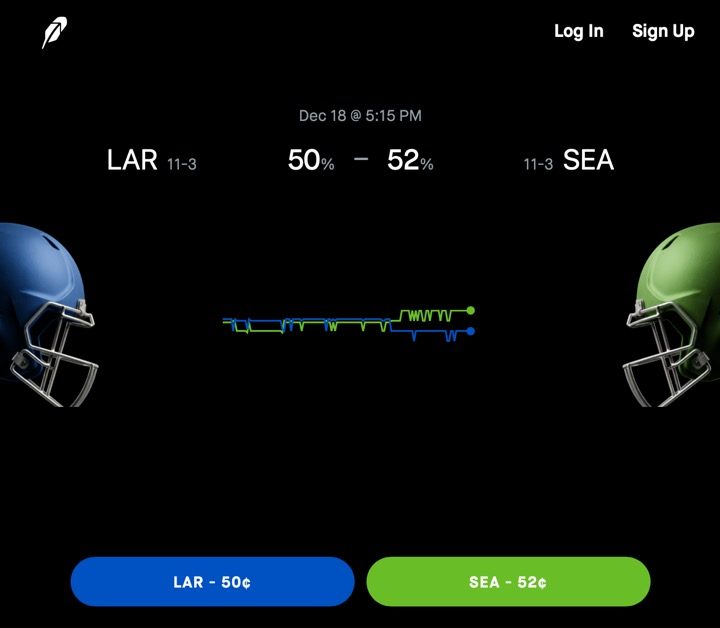An Individual Development Plan (IDP) is a structured tool designed to help you outline your career goals and identify the skills you need to achieve them. It not solely supports your personal growth but likewise aligns your aspirations with your organization’s objectives. This alignment can improve your job satisfaction and engagement. Comprehending the key components and benefits of an IDP will clarify why it’s crucial for both you and your employer in today’s competitive environment.
Key Takeaways
- An Individual Development Plan (IDP) outlines career goals and skill improvement in collaboration with a manager.
- IDPs enhance employee engagement by aligning personal aspirations with organizational objectives.
- Regular updates to IDPs ensure they adapt to evolving career goals and skill needs.
- Implementing IDPs can lead to higher employee retention rates, improving job satisfaction.
- IDPs promote open dialogue about growth, fostering a culture of continuous development within organizations.
Understanding Individual Development Plans
When you engage in an Individual Development Plan (IDP), you’re creating a collaborative roadmap with your manager that outlines your career goals and the areas you want to develop professionally.
The IDP process is distinct from performance evaluations; it focuses on your aspirations and skill improvement rather than solely on performance metrics.
This plan allows for open dialogue about your growth, combining on-the-job experiences, formal learning, and mentoring for thorough development.
Regular updates to your IDP are crucial, ensuring it aligns with your evolving career goals and the needs of your organization. By investing in your professional development through an IDP, you’re more likely to experience greater job satisfaction and increased retention within your company.
Key Components of an IDP
Key components of an Individual Development Plan (IDP) include an extensive summary of your current skills, career aspirations, and a structured action plan aimed at enhancing your knowledge and abilities in alignment with your long-term goals.
The IDP focuses on setting clear individual development plan objectives, identifying necessary competencies, and outlining measurable targets for progress.
Collaboration with your manager is essential, ensuring that the goals are realistic and aligned with the organization’s needs.
Regular self-assessment and feedback help you adjust your plan as your career evolves.
Individual development plan examples can illustrate how to structure your objectives and action steps, making it easier for you to track your growth over time and maintain relevance in your professional path.
The Importance of IDPs for Employee Growth
Individual Development Plans (IDPs) play an essential role in your career development by providing clear opportunities to improve your skills.
They help you engage more deeply with your work by aligning your professional goals with the organization’s objectives, which can lead to greater job satisfaction.
Career Development Opportunities
Career development opportunities play a crucial role in encouraging employee growth, especially through the implementation of Individual Development Plans (IDPs).
These plans serve as a structured approach to align your individual career development plan with your organization’s goals. By discussing your professional aspirations, you can identify necessary competencies and create action steps, ensuring you’re on the right path to success.
Individual development plan examples often include targeted training and skill-building initiatives that improve productivity and job satisfaction.
Research shows that companies investing in employee development see retention rates 34% higher than those that don’t. Engaging in the IDP process not only enhances your job satisfaction but likewise contributes to a high-performance work environment where both you and your organization can thrive.
Skill Enhancement Strategies
Though many employees seek to advance their skills, a structured approach like an Individual Development Plan (IDP) can greatly improve this process.
IDPs allow you to identify specific individual development plan goals, such as acquiring new competencies or improving existing ones.
For example, an individual development plan example might include setting short-term goals like attending workshops or pursuing certifications.
This focused strategy helps you track your progress and stay aligned with both your career aspirations and your organization’s objectives. Furthermore, regular discussions with your manager guarantee that any skill gaps are identified and addressed without delay.
Employee Engagement Benefits
Employee engagement plays a crucial role in promoting a productive work environment, and implementing Individual Development Plans (IDPs) greatly contributes to this engagement.
When you participate in IDPs, you’re more likely to feel valued, as these plans align your idp goals with organizational objectives. For example, IDP initiatives can lead to a 34% higher retention rate, demonstrating their effectiveness in nurturing commitment.
Furthermore, employees who see development opportunities as critical to job satisfaction are 58% more likely to feel engaged in their roles.
How IDPS Align With Organizational Goals
When you align your Individual Development Plan (IDP) with organizational goals, you improve employee engagement and support the company’s strategic objectives.
This alignment guarantees that your professional growth directly contributes to the skills and competencies the organization needs to succeed.
Enhancing Employee Engagement
Aligning Individual Development Plans (IDPs) with organizational goals is essential for nurturing a culture of growth and commitment within the workplace. When you set personal career objectives through your IDP, you contribute directly to the company’s success, enhancing employee engagement.
Research shows that organizations investing in IDPs enjoy a 34% higher retention rate, illustrating how such plans encourage commitment and satisfaction.
Additionally, 94% of employees are likely to remain longer at a company that supports their professional development.
Supporting Strategic Objectives
Individual Development Plans (IDPs) serve as a crucial link between your personal growth and the strategic objectives of the organization. By aligning your IDP development objectives with company goals, you contribute to a high-performance work environment.
Here’s how IDPs make a difference:
- They connect individual skills with organizational needs, ensuring you’re equipped to contribute effectively.
- Regular discussions about your IDP allow for ongoing adjustments, aligning your aspirations with evolving business objectives.
- Organizations that implement IDPs experience a 34% higher retention rate, reflecting a commitment to employee growth.
Ultimately, investing in an individual development plan not just supports your career but additionally strengthens the organization, nurturing a collaborative path to success.
Characteristics of Effective IDPs
Effective Individual Development Plans (IDPs) are customized to meet the distinct career objectives and strengths of each employee, which greatly improves engagement and satisfaction.
Successful IDPs identify specific development opportunities and set clear, measurable goals, allowing you to track your progress effectively. They require regular feedback and discussions with your manager, ensuring alignment with both personal aspirations and organizational objectives.
High-performing IDPs not only target skill gaps but also leverage your existing strengths, enhancing productivity.
To better understand how to create one, you can refer to individual development plan examples or use an individual development plan template as a guide.
Steps to Create a Successful IDP
Creating a successful Individual Development Plan (IDP) involves a structured approach that starts with a self-assessment. This step helps you identify your strengths, weaknesses, and career aspirations, laying the groundwork for effective goal setting.
Here’s how to create an IDP:
- Set clear short-term and long-term goals, breaking them into manageable subgoals.
- Develop strategies to upskill based on your current abilities and career objectives.
- Establish timelines for each goal to maintain accountability and motivation.
Regular follow-ups with managers and mentors are essential, as they provide support and resources to overcome challenges.
Identifying Strengths and Development Opportunities
Identifying your personal strengths is an essential step in the Individual Development Plan process, as it helps you understand which skills can propel your career forward.
Recognizing Personal Strengths
Recognizing personal strengths is essential for anyone looking to advance their career and improve their professional development.
This first step in the Individual Development Plan (IDP) process helps you identify your unique skills and talents.
Here are some effective methods to recognize your strengths:
[embed]https://www.youtube.com/watch?v=NwLGHCZTQt4[/embed]
- Self-reflection: Take time to assess your experiences and achievements.
- Feedback: Seek insights from trusted mentors or colleagues about your skills.
- Research: Explore job descriptions to understand the skills needed in your desired career path.
Assessing Skill Gaps
Once you’ve recognized your personal strengths, the next step is to assess skill gaps that may exist between your current abilities and the demands of your desired career path.
This reflective process allows you to compare your skills with industry requirements, helping you pinpoint areas for improvement.
You can utilize individual development plan examples to systematically list your strengths and weaknesses.
Engaging in informational interviews with professionals in your field can provide insights into vital competencies needed for success. Moreover, regular feedback from mentors or colleagues offers external perspectives on your skills.
Staying informed about industry trends is critical, as it helps you align your skill set with evolving employer expectations, ultimately enhancing your employability.
Aligning Goals With Talents
As you consider your career aspirations, comprehending your strengths is essential for aligning your goals with your personal talents. Recognizing what you excel at improves your employability and job satisfaction.
An individual professional development plan can help you reflect on your skills and identify areas for growth. Here are some steps you can take:
- Use self-assessment tools to evaluate your strengths and weaknesses.
- Seek feedback from colleagues or mentors to gain different perspectives.
- Establish clear, actionable goals based on your findings.
Setting SMART Goals in Your IDP
Setting SMART goals in your Individual Development Plan (IDP) is essential for guiding your professional growth effectively.
SMART goals are Specific, Measurable, Achievable, Relevant, and Time-bound objectives that clarify your aspirations and track your progress.
For instance, when you outline individual development plan examples, make sure each goal aligns with these criteria. Research indicates that employees with clearly defined goals are 10 to 25% more productive, emphasizing the importance of structured goal-setting in IDPs.
By incorporating SMART criteria into your IDP development plan, you can set realistic and attainable objectives, reducing frustration as you boost job satisfaction.
Regularly reviewing and updating these goals helps you adapt to evolving personal aspirations and organizational needs, enhancing your overall career trajectory.
Continuous Evaluation and Adjustment of the IDP
Evaluating and adjusting your Individual Development Plan (IDP) is crucial for ensuring it stays relevant to your evolving career goals and the ever-changing needs of your organization.
Regular updates improve the IDP’s effectiveness, reflecting your progress and adjusting goals. Consider these key aspects during evaluation:
- Schedule annual reviews or updates during performance appraisals.
- Discuss the IDP form with your manager to promote accountability.
- Adapt goals based on project timelines, industry trends, and personal achievements.
Utilizing individual development plan examples can likewise help you identify new learning opportunities and competencies required for future roles.
A well-maintained IDP nurtures professional growth and contributes to higher employee retention and satisfaction rates, ultimately benefiting both you and your organization.
Benefits of Implementing an IDP
Implementing an Individual Development Plan (IDP) offers numerous benefits that can greatly impact both you and your organization. First, it improves employee retention; studies show that 94% of employees are likely to stay longer when companies invest in their professional development.
Furthermore, IDPs promote open dialogue between you and your manager, aligning your personal goals with organizational objectives.
By establishing clear short-term and long-term goals, you can identify skill gaps and focus on continuous learning, leading to increased job satisfaction and performance.
Companies utilizing IDPs cultivate high-performance environments, as 58% of employees consider development opportunities crucial for career advancement.
Reviewing individual development plan examples can provide further insights into effective strategies for your growth.
Resources for Developing Your IDP
Developing an Individual Development Plan (IDP) requires access to a variety of resources that can guide you through the process effectively.
You’ll find that various tools can improve your IDP experience, including:
- Templates and guides from Human Resources to outline your career goals and development areas.
- Informational interviews with professionals in your desired field, offering insights into necessary skills and competencies.
- Self-assessment tools to help identify your strengths and weaknesses, tailoring your IDP to your unique needs.
Furthermore, consider mentorship programs for guidance and support.
Regularly review and update your plan to guarantee it aligns with your evolving aspirations.
For those in the idp army, exploring individual development plan examples can likewise provide inspiration and direction.
The Role of Managers in the IDP Process
Though utilizing various resources can greatly improve your Individual Development Plan (IDP) experience, the role of managers in this process is equally important.
Managers initiate the IDP process by engaging in meaningful conversations with you to identify your career aspirations and developmental needs. They help transform these discussions into actionable plans by outlining specific goals and necessary experiences for your growth.
https://www.youtube.com/watch?v=-T8w4xiPS-E
Regular check-ins guarantee accountability, providing opportunities for feedback and adjustments. Acting as career coaches, managers use individual development plan examples, including army IDP examples, to identify high performers and address areas needing improvement.
When managers prioritize developmental opportunities, they cultivate a culture of continuous growth, enhancing employee engagement and retention rates within the organization.
Real-Life Examples of Successful IDPs
When you look at real-life examples of successful Individual Development Plans (IDPs), you’ll see how these plans can greatly impact career growth and satisfaction.
For instance, an IT specialist gained cloud computing certifications, leading to increased responsibilities and a promotion. Similarly, a marketing professional shifted to management by honing leadership and project management skills.
Here are some key individual development plan examples for leadership:
- A healthcare worker improved patient communication and was selected for a leadership role.
- A finance analyst participated in cross-departmental projects, enhancing visibility and paving the way for advancement.
- A customer service employee boosted conflict resolution skills, resulting in a 25% rise in customer satisfaction.
These examples highlight the effectiveness of IDPs in encouraging professional growth.
Frequently Asked Questions
What Is the Purpose of an Individual Development Plan?
The purpose of an Individual Development Plan (IDP) is to improve your professional growth and job satisfaction.
It encourages you to set clear career goals, identify necessary skills, and create an actionable plan.
Through annual discussions with your manager, you can align your strengths and aspirations with organizational objectives.
The IDP likewise promotes ongoing communication, in the end contributing to both your success and the overall success of your organization.
What Is a Personal Development Plan and Why Is It Important?
A personal development plan (PDP) outlines your career goals and the skills you need to achieve them.
It helps you identify strengths and weaknesses, allowing you to set measurable short- and long-term objectives.
[embed]https://www.youtube.com/watch?v=sCQ0VYNCmKw[/embed]
By regularly updating your PDP, you improve job satisfaction and increase retention rates, as organizations that invest in development see greater employee loyalty.
Engaging in this process encourages communication with managers, aligning your aspirations with the company’s goals for mutual success.
What Is the Purpose of the IDP?
The purpose of an Individual Development Plan (IDP) is to improve your professional growth and job satisfaction.
It allows you to identify career goals and necessary skills through annual discussions with your manager. By creating a structured action plan, you can focus on building competencies that align with both your aspirations and the organization’s needs.
In the end, the IDP promotes a collaborative approach to achieving mutual success in your career development path.
What Are the Benefits of IDP?
An Individual Development Plan (IDP) offers numerous benefits for your professional growth.
It helps you set clear goals and identify the skills needed for future success. By creating a structured action plan, you can focus on both short-term and long-term objectives.
Engaging in this process increases job satisfaction, promotes retention, and cultivates a high-performance work environment.
Moreover, IDPs align your aspirations with organizational goals, ensuring mutual success for both you and your employer.
Conclusion
To conclude, an Individual Development Plan (IDP) serves as an essential tool for both employees and organizations, promoting personal growth and aligning individual aspirations with company goals. By outlining career objectives and necessary skills, IDPs facilitate productive conversations between employees and managers.
Implementing effective IDPs can lead to improved job satisfaction, higher retention rates, and a more engaged workforce. In the end, a well-structured IDP benefits everyone involved, contributing to a positive workplace culture and professional development.
Image Via Envato
Disclaimer: This story is auto-aggregated by a computer program and has not been created or edited by finopulse.
Publisher: Source link








